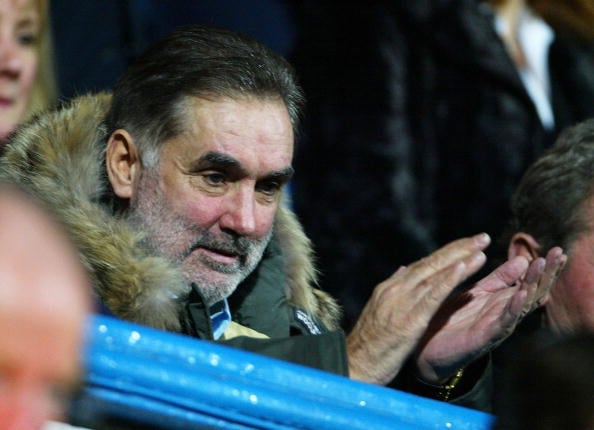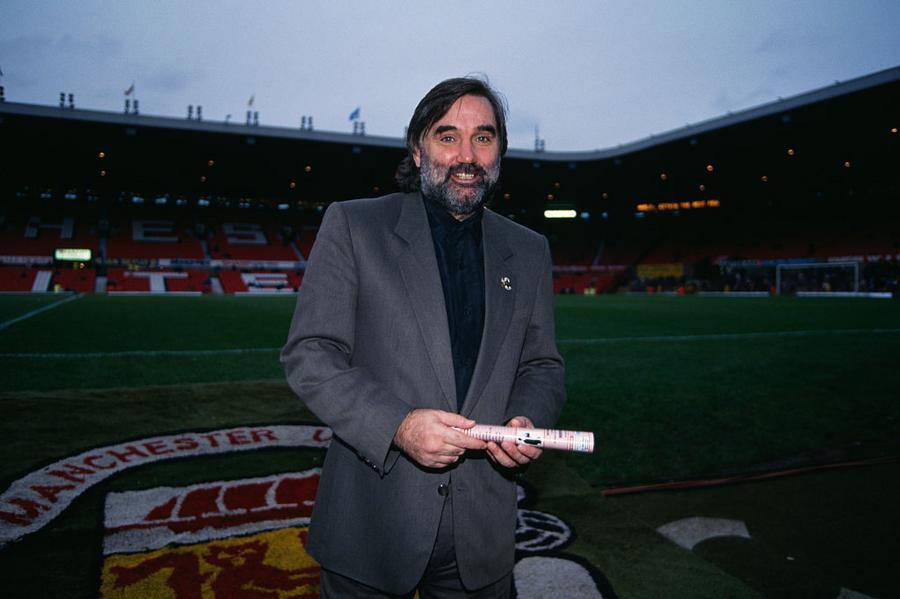What was George Best's Net Worth and Salary?
George Best was a Northern Irish professional footballer who had a net worth of $250,000 at the time of his death in 2005. At the peak of his career in the late 60s, George was earning around $150 thousand per year which is the same as around $1 million per year from salary and endorsements, after adjusting for inflation. His name and image appeared on more than 80 different products from cereal to shoes. Unfortunately, according to George himself, he blew 90% of his money on "women, drink and fast cars." George left behind an estate worth 138,000 pounds to his son Calum Best.
George Best played from 1963 to 1983, spending the majority of his club career with Manchester United. Widely regarded as one of the greatest footballers of all time, he won two league titles, two Charity Shields, the European Cup, and a Ballon d'Or with United, and was the club's top goalscorer for six consecutive seasons. Beyond the field, Best led a decadent playboy lifestyle that resulted in alcoholism and other personal problems, leading to his early death in 2005.
Early Life and Education
George Best was born on May 22, 1946 in Belfast, Northern Ireland as the first child of Anne and Richard, and was raised in Cregagh. He had four sisters named Carol, Barbara, Julie, and Grace, plus a brother named Ian. As a youth, the academically gifted Best went to Grosvenor High School, and then to Lisnasharragh Secondary School. He played football with the Cregagh Boys Club.
Manchester United
When he was 15, Best was discovered in Belfast by Manchester United scout Bob Bishop, and was subsequently given a trial with the club. He spent two years as an amateur with United before turning professional in 1963. In his first professional season, Best scored six goals in 26 appearances to help United finish second in the league behind Liverpool. He also captained the United side that won the 1964 FA Youth Cup. Best went on to help United win the league title and an FA Charity Shield in 1965. The following year, he was launched to international superstardom when he scored two goals in a European Cup quarterfinal match against the Portuguese club Benfica. Best and United had another great season in 1966-67, claiming another league title and FA Charity Shield. The next season was a landmark one, as United claimed its first-ever European Cup by defeating Benfica in the final. For his contributions, Best won FWA Footballer of the Year honors and the Ballon d'Or.
Following his incredible 1967-68 season, Best began to experience a steady decline in his playing as United similarly struggled. After the end of the 1968-69 season, United manager Matt Busby resigned. Under new manager Wilf McGuinness in the 1969-70 season, United improved slightly but still only came in eighth place in the league. The 1970-71 season also ended without any trophies for the club. Meanwhile, Best was getting into trouble for misconduct, resulting in a fine and a two-week suspension. With new manager Frank O'Farrell, United came in eighth in the league in the 1971-72 season. Best continued to have discipline problems, and at one point failed to show up for training for a whole week. Although he announced his retirement at the end of the season, he returned for the 1972-73 season, once again in poor form. Upset with United's declining performance, Best went missing in December so he could party at nightclubs in London; he was consequently suspended and transfer-listed. He then announced his retirement for a second time, but again returned to the club afterwards. Best played his final competitive game for United on New Year's Day, 1974, which was a loss to Queens Parks Rangers.

Getty
Later Playing Years
After leaving United, Best spent a decade drifting between various clubs in South Africa, Ireland, Scotland, the United States, and Australia. He played five competitive matches for the Jewish Guild in South Africa, and three for Stockport County in 1975. Best subsequently made three appearances for Ireland's Cork Celtic between late 1975 and early 1976. In the United States, he played for the Los Angeles Aztecs from 1976 to 1978; for the Fort Lauderdale Strikers from 1978 to 1979; and for the San Jose Earthquakes from 1980 to 1981. Best also had stints with the English club Fulham and the Scottish club Hibernian, and played a few matches with the Hong Kong clubs Sea Bee and Rangers in the early 1980s. For the 1982-83 season, he played briefly with AFC Bournemouth before ending his professional playing career in 1983 with a four-match stint for Australia's Brisbane Lions.
International Career
In international football, Best played for the Northern Ireland men's national football team between 1964 and 1977, during which time he was capped 37 times and scored nine goals. Mostly surrounded by teammates of lesser ability, Best considered his international career to be "recreational football." He never played in any major international tournament finals, and never even played in a World Cup.

(Photo by Christian Liewig/TempSport/Corbis via Getty Images)
Legal Problems
Best got into many legal problems during his life. In 1972, he was arrested and charged with the assault of a waitress named Stevie Sloniecka. Two years later, he was arrested and charged with stealing model and actress Marjorie Wallace's fur coat, passport, and cheque book. Best was ultimately cleared of all charges.
Many of Best's legal troubles were related to his alcoholism. Early in the decade, he robbed a woman by taking money from her handbag so he could fund a drinking session, and in 1984 he received a three-month prison sentence for driving under the influence and assaulting a police officer. Later, in 2004, Best was banned from driving for 20 months after another drunk-driving offense.
Personal Life and Death
As he rose to fame as a footballer, Best became a celebrity in the media. He was known for his dark Beatle mop-top hair, good looks, and increasingly lavish playboy lifestyle. In 1971, Best had a fling with actress Sinéad Cusack. During the decade, he owned a number of nightclubs, restaurants, and fashion boutiques in Manchester. Best married his first wife, model Angela MacDonald-Janes, in early 1978; they had a son named Calum before separating in 1982 and divorcing in 1986. Best went on to wed Alex Pursey in 1995; they divorced in 2004 amid allegations by Pursey that she had been repeatedly assaulted by Best during their marriage.
Due to his alcoholism, Best was diagnosed with severe liver damage in 2000. He later had a successful liver transplant in London in 2002, although the operation caused controversy due to being performed at public expense. Still, Best continued drinking heavily after the transplant, and in 2005 was admitted to an intensive care unit with a kidney infection caused by the immunosuppressive drugs he was taking. On November 25, 2005, Best passed away after stopping treatment; he was 59 years of age. Following a live broadcast of his funeral on several television stations, Best was interred beside his mother at Roselawn Cemetery, overlooking Belfast.
/2018/10/george-best-1.jpg)
/2013/09/Paul-Gascoigne.jpg)
/2024/05/Riyad-Mahrez.jpg)
/2010/05/Wayne-Rooney.jpg)
/2010/05/Alex-Ferguson.jpg)
/2014/07/cal.jpg)
/2020/11/Yella-Beezy.jpg)
/2023/08/richard-dawson.png)
/2020/08/cusack.jpg)
/2019/04/Kathy-Griffin.jpg)
/2015/02/dd.jpg)
/2009/12/Joan-Rivers.jpg)
/2010/07/GettyImages-80351333.jpg)
/2010/11/George-Clinton-e1739657171540.jpg)
/2020/02/melissa-rivers.jpg)
/2009/12/Mario-Lopez-1.jpg)
/2011/08/Doug-Hutchison.jpg)
/2018/10/george-best-1.jpg)
/2014/07/cal.jpg)
/2010/05/Wayne-Rooney.jpg)
/2010/05/GettyImages-130200681.jpg)
/2009/09/Cristiano-Ronaldo.jpg)
/2010/05/Alex-Ferguson.jpg)
/2025/03/Virgil-van-Dijk.jpg)